Mangrove Rangers advocate for the ‘Heart of Cayman’
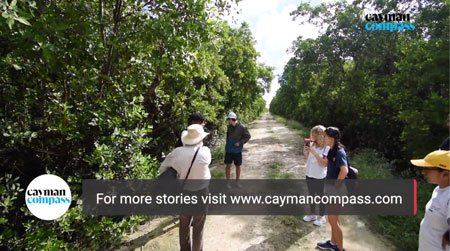
CAYMAN ISLANDS – A small but growing group of volunteers is working to protect and preserve ‘the heart of Cayman’ – the mangroves that provide the islands storm protection, habitat for native species and weather regulation. Mangrove forests are one of the most valuable coastal ecosystems on the planet offering many natural services that protect humanity’s best interest. However, these ecosystems are depleting rapidly, thus contributing to ecological degradation due to climate change and over development. Since 1970, We have lost 3,900 acres of pristine mangrove forests in the western area of Grand Cayman. With only 1,500 acres of mangroves left (38%! in this area, we have decided enough is enough and as we fight to protect this important ecosystem. In addition, the 8,500 acre Central Mangrove Wetlands – the largest contiguous mangrove forest in the Caribbean – is under serious threat of development. Conservation requires an array of skills hence why our Rangers come from diverse backgrounds from marketing, law, hospitality to videography, and education. All of our Rangers are knowledgeable on the scientific functions of mangrove ecosystems in addition to their specialty. We value teamwork and the elevation of individual aspirations. We aim to develop each other weaknesses and utilize each other strengths as we protect this valuable natural resource. We aim to educate and enable students, teachers, parents, and their communities in the understanding and monitoring of the wonderful world of mangroves in the Cayman Islands. We achieve this through, observation, outreach data collection and advocacy. We continue to establish a conservation ethos to protect and enhance mangrove ecosystems. VIEW VIDEO GLOBAL Art to save the mangroves : a key to climate change
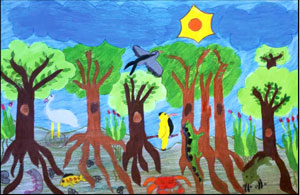
GLOBAL: “Close your eyes and imagine some wetlands with magical trees, with huge roots emerging from a gray, half-swampy soil. A place that is right where fresh water and salt water meet: in which there are canals to navigate, manatees, crocodiles, monkeys and many species of birds. Those are the mangroves ”. This is the way Mónica Gutiérrez Quarto, a Chilean artist who now lives in the United States, describes one of the ecosystems to which she has dedicated part of her work. As a member of the Mangrove Action Project (MAP) team, an initiative founded by her husband Alfredo Quarto, she uses art to educate boys and girls around the world about mangroves: one of the most important forests for climate change. In fact, according to the Convention on Wetlands, known as the Ramsar Convention, mangroves and associated wetlands account for almost a third of the world’s terrestrial carbon stocks. That makes them key to fighting climate change. But like many ecosystems, mangroves are under threat. Alfredo learned about this several years ago when he traveled to southern Thailand and learned about the problem first-hand. There, as in other parts of the world, shrimp farms were being installed, which not only affected the ecosystem, but also threatened the communities that live off them and had been opposing these projects. Since then his mission, together with MAP, has been to work to reforest and restore them. But they do not do it in a conventional way, simply by planting the trees and their seeds, but by involving the community. A method that, according to Quarto, has proven to be more effective. READ MORE (en Español) 4 Opportunities to Shore Up the World’s Coastal Ecosystems

GLOBAL – For the more than 3 billion people who live near the ocean, coastal ecosystems support jobs, industries and trade, as well as provide food and buffering against storms and other severe natural events. Yet, these vital areas are at risk as rising populations and growing urbanization prompt the significant loss and damage of coastal habitats — including saltmarshes, mangroves, coral reefs and shellfish reefs. These losses reduce coastal resilience, as well as our ability to recover and adapt to climate change and other human-caused threats. To change this trajectory, a new paper commissioned by the High Level Panel for a Sustainable Ocean Economy proposes a new way forward with four opportunities for action to ensure sustainable and resilient coastal zones. READ MORE Public Perceptions of Mangrove Forests Matter for Their Conservation
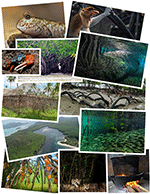
GLOBAL – Iconic species and landscapes attract public attention to help reverse the degradation of ecosystems and their biodiversity; sharing their images on social media can act as a powerful way to influence perceptions and drive positive actions by the public. Social media platforms such as Twitter, Facebook and Instagram have been used to great effect to communicate the urgency required to halt and reverse tropical forest loss and the plight of coral reefs. Ecosystems such as seagrass meadows, mudflats, and mangrove forests receive substantially less media exposure. Despite our improved understanding of the importance of mangrove forests and their ecosystem services, negative perceptions of these wetlands are still common. We highlight the dangers of recurrent public misperceptions about mangroves and how they can be countered. The authors represent a variety of stakeholders involved in the research and communication of mangrove forests through academia, government agencies and non-governmental organizations involved in conservation. READ MORE AFRICA Mangrove revival: How tree-planting is financing women’s businesses in Kenya
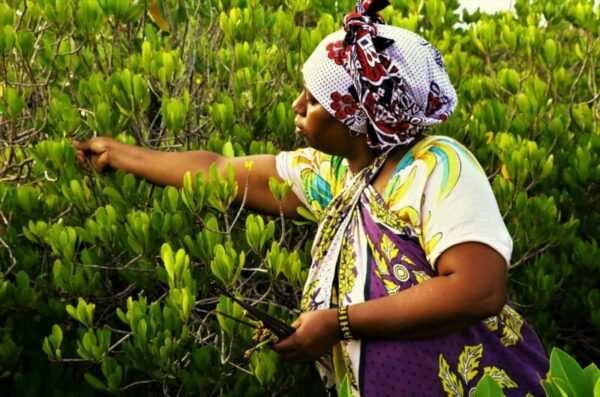
KENYA – Mangrove forests are an essential source of fish, medicines and mosquito repellant to people living on Kenya’s Indian Ocean coastline – as well as providing climate benefits by storing carbon. In Lamu County, the most heavily forested stretch of coast, nearly 40% of the mangrove area has become degraded, driven by unsustainable logging for construction and firewood. Local women are reversing the trend, in a community conservation initiative that combines tree-planting with microfinance. Volunteers have restored 10,000 hectares of forest cover, towards a target of 35,000 hectares in five years, raising revenue through the sale of carbon credits. Some of the proceeds go to a microloan scheme, empowering members to start businesses and overcome poverty. READ MORE AMERICAS Tilting Boat Threatens Massive Oil Spill in Caribbean

Venezuela—A Venezuelan ship carrying more than 1 million barrels of oil is listing in the Caribbean Sea, threatening to create an environmental disaster that could be the region’s worst ever. The storage and offloading vessel is listing to one side in the Gulf of Paria, between the island of Trinidad and Venezuela’s east coast, where it is permanently moored. The vessel, dubbed the Nabarima, is operated by Petrosucre, a joint venture between PDVSA, the Venezuelan state-owned oil company, and Italian multinational Eni, one of the world’s seven “supermajor” oil companies. Environmental groups have expressed concern that the estimated 1.3 million barrels of crude on the vessel could spill into the sea, despite recent reports that a ship-to-ship transfer of the oil is underway. “It appears that a Venezuelan oil tanker, the ICARO, has approached the FSO Nabarima and is transferring some of the oil within, affording an opportunity to assess the listing,” Gary Aboud of Fishermen and Friends of the Sea said in a statement. READ MORE ASIA JICA funding dirty coal in Bangladesh and Indonesia
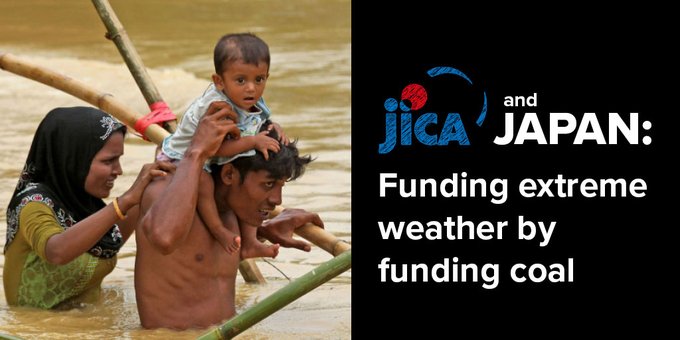
JAPAN – The Japan International Cooperation Agency (JICA), a development agency under the Japanese Ministry of Foreign Affairs, is considering lending funds to build the 1,200 MW Matarbari (Phase 2) coal fired power plant in coastal Bangladesh and Indramayu (Phase 4), a 1,000MW coal power station in Indonesia. JICA is participating in a meeting with other development agencies from around the world discussing climate and other global issues on November 10- 12. This Finance in Common Summit is the perfect time to call them out for their hypocrisy! If built, the coal plants would emit millions of tonnes of carbon into the atmosphere, emissions that will speed up the destruction of our shared climate and contradict Japan’s recent commitment to produce net zero carbon emissions by 2050. The plants will also worsen the air quality and livelihoods of local communities in the area, when these communities are already being hit with air pollution and climate impacts. JICA and the Ministry of Foreign Affairs need to know that the global community isn’t going to stand for them building two polluting power stations and claiming to act on climate. TAKE ACTION A Philippine community sees life-saving payoffs from restoring its mangroves

PHILIPPINES – In December 1989, Elizabeth Ramos, now 63, heard from a neighbor that a mangrove reforestation project was underway near her home in the province of Aklan in the central Philippines. The meeting Ramos joined that day was for a reforestation effort by the Department of Environment and Natural Resources (DENR), which had hired 30 local families to plant 50 hectares (124 acres) of mangroves in the mudflats of the adjoining villages of Old and New Buswang. Ramos was not one of the villagers originally selected to participate in this livelihood scheme, which offered people 75 centavos (then about 4 U.S. cents) per tree planted. But when other participants backed out, Ramos stepped in, ultimately becoming an integral part of a program that would reshape both her life and her community. READ MORE Landless Thais granted homes in mangrove forest

THAILAND – Thai authorities have reached an agreement with a landless community that allows villagers to live in a mangrove forest if they help protect the area, a unique collaboration that could work across the country, land rights groups said. Under a memorandum of understanding (MOU) between the government, human rights groups and about 45 families in the coastal town of Ranong, the community would not get ownership rights, but would receive assistance in building homes and access to utilities. The agreement, which was struck earlier this month and includes indigenous people such as the sea gypsies, is now being replicated in the coastal cities of Phuket and Krabi. “The communities have been fighting for land for a long time and we had been trying to find a solution through numerous negotiations,” said Maitree Jongkraijug, a manager at the Chumchonthai Foundation, a nonprofit that is a part of the MOU. “This is a pilot project, the first of its kind — a model of cooperation between communities, civic organizations and the government that can work for landless people in protected areas,” he told reporters. READ MORE How are villagers of Kakapir saving the mangroves?
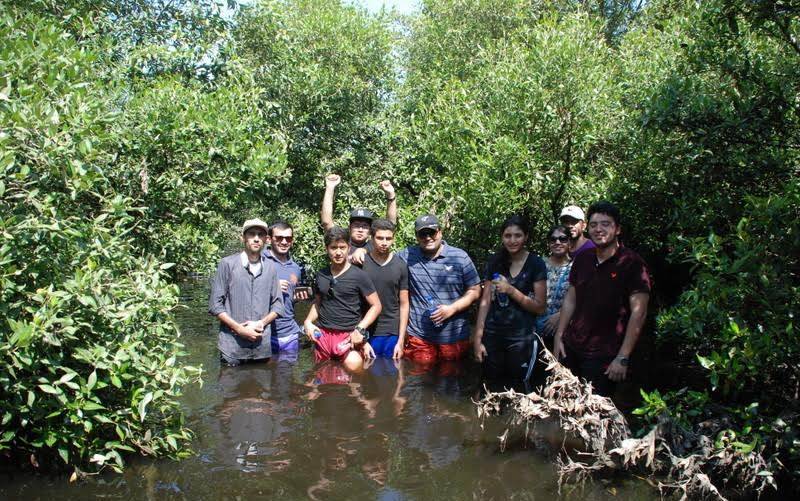
PAKISTAN – Mangroves are one of the most important components of the marine ecosystem. However, their relentless deforestation, together with the dumping of industrial and domestic waste into the sea, have led to the destruction of these eco-friendly plants. Fishermen and their families living in the coastal regions have traditionally been the custodians of mangrove forests. Such is the case of the people of Kakapir, a fishing village in Karachi Harbour, situated 15 kilometres to the west of the metropolis. Speaking to Geo News, Mai Ruqqaiyah, an old woman from Kakapir, said that she protects the trees just like she protects her children. She is one of the many active community members who are working hard for the survival of the mangrove forests. “These forests not only helped us catch prawns and fish but they also mitigated the effects of storms for many years,” she said. “Greedy humans, however, destroyed these forests to fill the land and construct buildings.” READ MORE Fighting climate change with bamboo

CHINA – Bamboo is a surprisingly effective carbon sink and is being promoted by the government as a uniquely chinese solution to climate change they are synonymous with the giant panda, and a ubiquitous part of life and culture across much of the south. China’s bamboo forests – all 6.8 million hectares of them – could also play an outsized role in the country’s plans to check climate change. Fast-growing, versatile and able to thrive on sloping, degraded soils, giant bamboos have long been considered a valuable source of income – sometimes called “poor man’s timber” – as well as an important tool for stabilising slopes and preventing soil erosion. More recently, bamboo has gained attention alongside tree-planting for its potential role in removing large amounts of carbon dioxide from the atmosphere, which would contribute to keeping global warming below 1.5C. Despite its potential, several issues have hindered bamboo’s take-up as a carbon sink. READ MORE EUROPE Mangrove coverage is declining, but there is hope, flags study

U.K. – Mangroves forests are being threatened at an increasing pace: River dams negatively impact the supply of mud that raises mangrove soils. The space required for their survival is increasingly getting occupied by buildings and seawalls. Tidal barriers have proven to be disastrous for mangrove coverage and can result in species loss. But mangrove coverage can increase despite sea-level rise if sediment supply is sufficient and land accommodation space available, according to a recent study published in Environmental Research Letters November 10, 2020. Mangroves depend on a steady supply of sediment flowing down from rivers. The delivery of sediment from most rivers reduced over the past three decades. Coastal mangrove forests are valuable, highly biodiverse ecosystems that protect coastal communities against storms. A narrow mangrove zone is less effective in protecting the coast against storms; in the worst case, it may lose its protective properties altogether. “Both mangrove coverage loss and diversity loss go hand in hand when that landward retreat is limited by expanding cities, agriculture or flood protection works,” said Barend van Maanen from the University of Exeter and one of the authors of the study. READ MORE VIDEO FEATURE Blue carbon – our oceans are a natural climate solution
Our oceans represent one of the biggest opportunities for slowing and reversing climate and ecological breakdown – but they are under continuing threat from over-fishing, dumping of toxic waste and other human impacts. By protecting and restoring the world’s oceans, we can help restore the prospects of humanity. WATCH VIDEO HERE
Written & Narrated by George Monbiot
Design, Direction & Animation: Al Boardman
Sound Design: Joe Watkinson My Octopus Teacher
A filmmaker forges an unusual friendship with an octopus living in a South African kelp forest, learning as the animal shares the mysteries of her world
WATCH VIDEO HERE Like this newsletter?
Pease consider donating to MAP to keep it going.
Giving could never be easier  | FEATURE ACTION ALERTTell the Japan International Cooperation Agency not to fund polluting coal – TAKE ACTION
MORE ACTION Our Paradise and Sovereignty under Siege – Protect Grenada from Destructive Development! SIGN THE PETITION Stop the destruction of Can Gio Mangrove Biosphere Reserve
SIGN PETITION (Scroll down in linked page for English version)Please SIGN: keep plantations out of orangutan habitat!
TAKE ACTIONUnilever: stop destroying mangroves for convenience food! SIGN OUR PETITION
Stop plundering the oceans for industrial aquaculture! SIGN THE PETITION
NOW TAKING ORDERS!
ORDER YOURS!
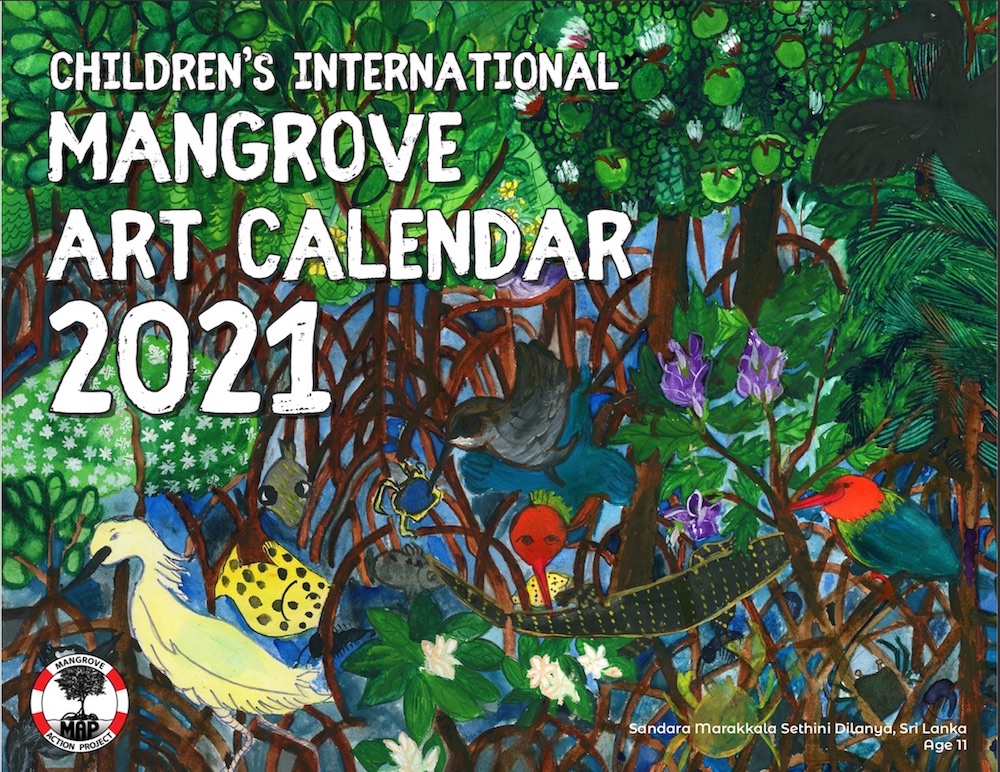
Like this newsletter? Pease consider donating to MAP to keep it going. Giving could never be easier
CBEMR Training in Tanzania: Ground-breaking training breathes life into mangrove ecosystem restoration – The Mangrove Alliance Please see our newest video: ” Restoring The Natural Mangrove Forest” – https://youtu.be/Vh7CoPBLQa8 Mangrove Restoration Map VIEW MAP HERE 
Restoring The Natural Mangrove Forest
Watch movie 
Community Based Ecological Mangrove Restoration in Rufiji Delta VIEW VIDEO Video: Mangroves for the Future – A look bacK. As the latest phase of Mangroves for the Future (MFF) draws to a close, this video highlights some of the project’s most successful initiatives – from local women supporting national park management in Viet Nam to an island in the Maldives that has become a model for waste management, and everything in between. View Here WANT TO GET INVOLVED?
Follow and Join MAP!    
Like this newsletter? Pease consider donating to MAP to keep it going. Giving could never be easier 

Singing for the Sundarbans WATCH HERE Entrevista con Monica Quarto del Mangrove Action Project (Spanish language) Oye Aqui
VOLUNTEER OPPORTUNITY 
MANGROVE ISSUES Want to learn more about mangroves?
Our short presentation will give you a better understanding of the issues we are working to solve. WATCH PRESENTATION What is CBEMR? Download MAP’s 2 page CBEMR Information Sheet containing links to all MAP’s CBEMR resources – CLICK HERE What is EPIC? – The Ecosystems Protecting Infrastructure and Communities (EPIC) project: the role of ecosystems as protective barriers against climate induced hazards View MAP’s uploaded Videos at MAPmangrover’sChannel Question Your Shrimp Consumer/Markets Campaign!
WATCH VIDEO Mangrove Restoration in Asia – Watch Short Video Mangroves: Guidebook to Malaysia – Click Here SHARE MAP’S VISION
CLICK HERE to watch short introductory video. Together we can work “at the roots of the sea”. Our short documentary, Reducing the Risk of Disaster through Nature-Based Solutions : Mangroves

Marvellous Mangroves Curriculum The Marvellous Mangroves Education Forum is an online hub for those utilizing the Marvellous Mangroves (MM) Curriculum. It gives students, teachers and anyone interested in mangroves, the opportunity to learn and share ideas themed around the curriculum, to connect and communicate with others around the globe whilst exploring mangroves from your computer or on the go. VISIT 
The award-winning Marvellous Mangroves (MM) curriculum educates children on the importance of mangroves and their ecological functions, teaching them about modern challenges and mechanisms for sustainability. VIEW VIDEO Marvellous Mangroves Curriculum in Bangladesh – WATCH VIDEO
MARVELLOUS MANGROVES IN BRAZIL
En Portuges 
Marvellous Mangroves – A Curriculum-Based Teachers Guide. FOR MORE ON MAPs AWARD WINNING CHINA MANGROVE CURRICULUM VISIT

VIMEO SHOW
VISIT OUR “MM” WEBPAGE Check out our presentation for more details on Marvellous Mangroves Read this 10 page history of the development of MAP’s educational curriculum VIEW DOCUMENT
Like this newsletter? Pease consider donating to MAP to keep it going. Giving could never be easier 
“Question Your Shrimp” Campaign Question Your Shrimp- Don’t Buy or Sell Imported Tropical Shrimp! Sign the Petition Learn more about the affects of the shrimp industry on mangroves by visiting our blog
Editor’s Note: Mangrove Action Project’s Executive Director, Alfredo Quarto was interviewed about shrimp by Green Acre Radio’s Martha Baskin
LISTEN TO INTERVIEW Sign the Consumer’s Pledge to avoid imported shrimp
Note to Our Readers: We strive to keep active links in our newsletter. However, due to circumstances beyond our control, occasionally links to stories may become broken. If you find a link to a story is not functioning, please cut and paste the headline into your browser search bar. In most cases you should be able to locate the original story.
Not yet a MAP News subscriber?
Click here to subscribe. 
|




























